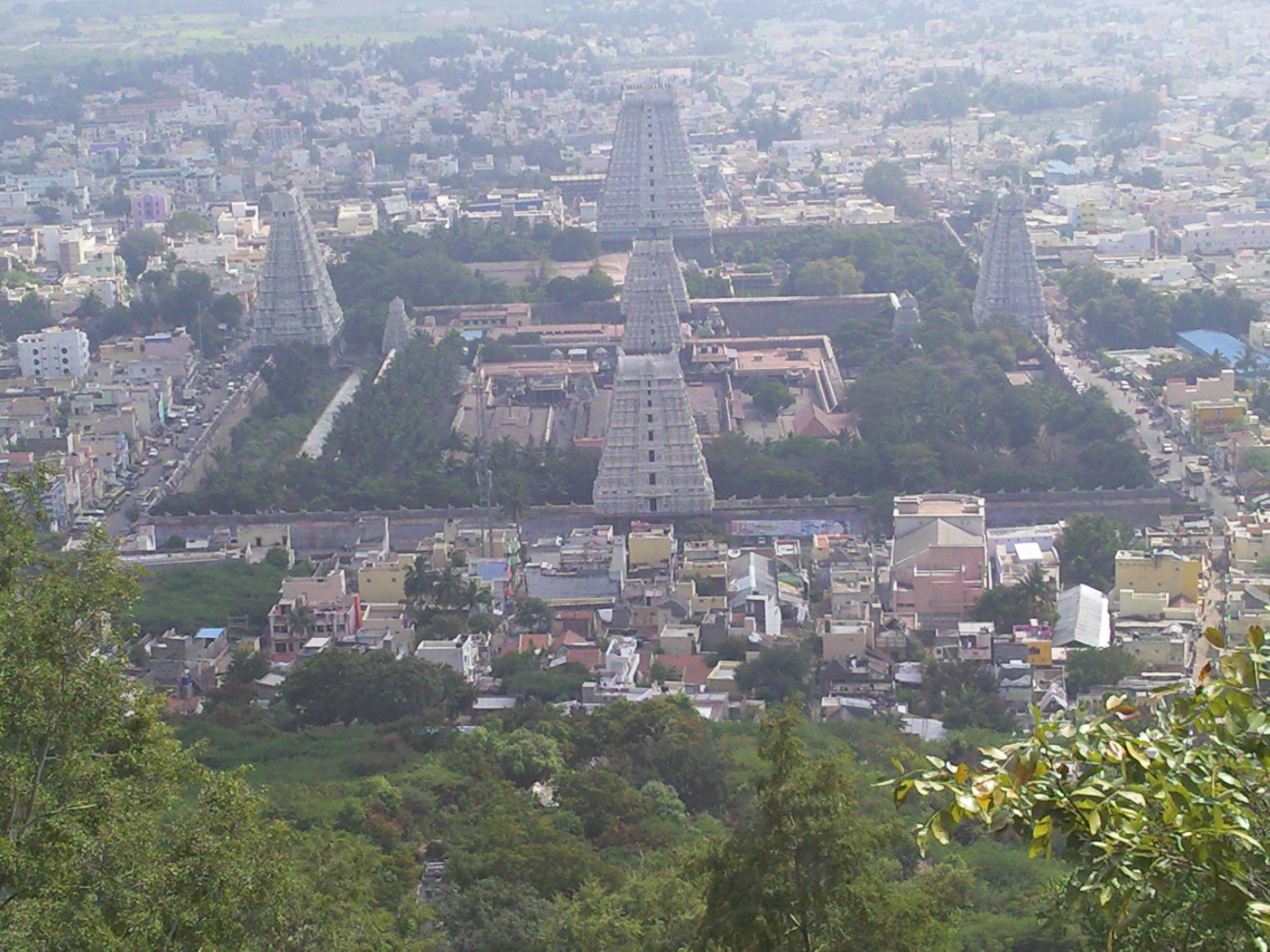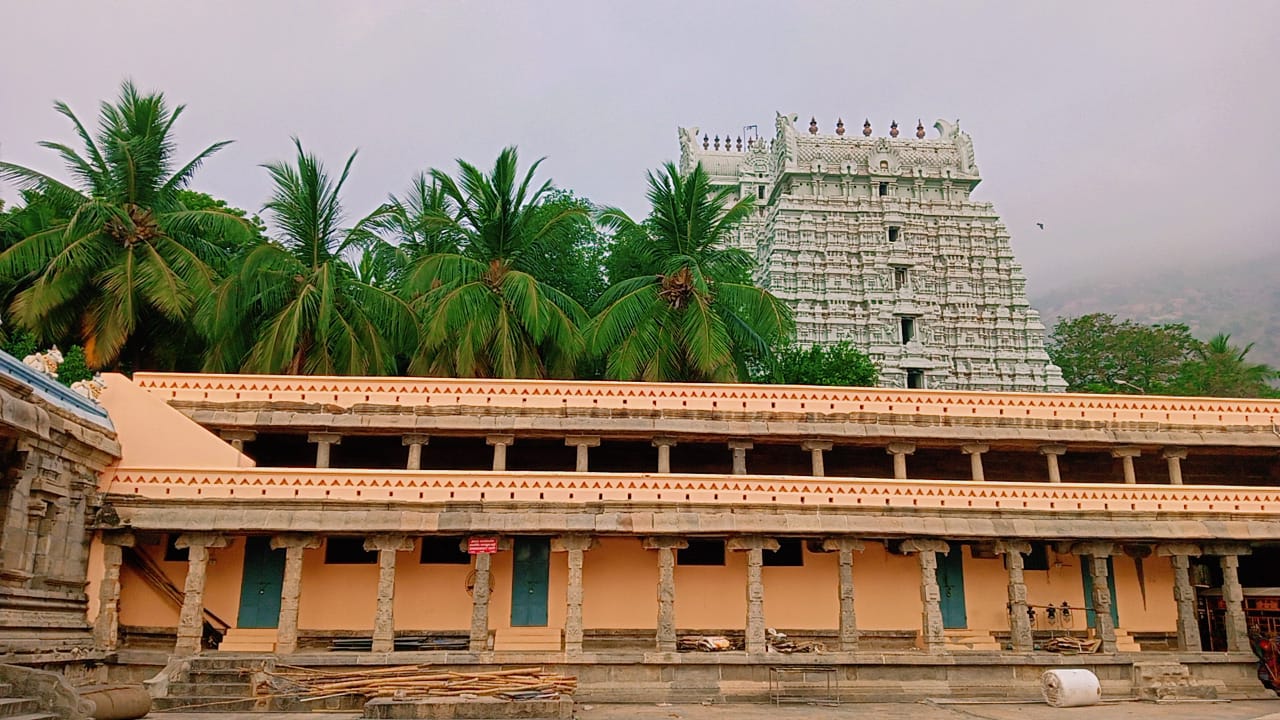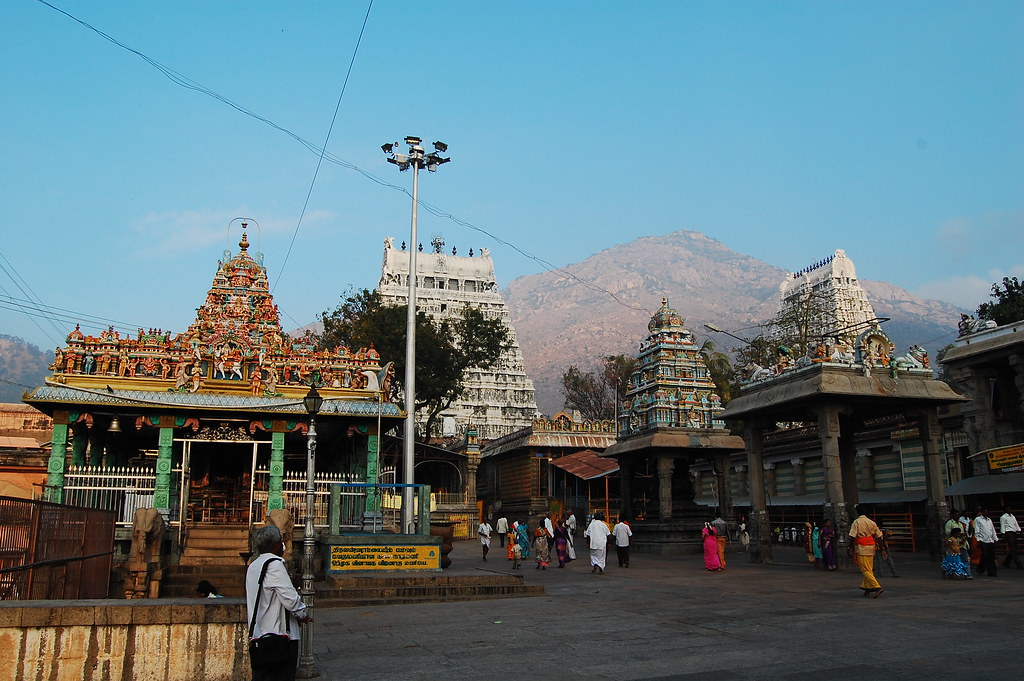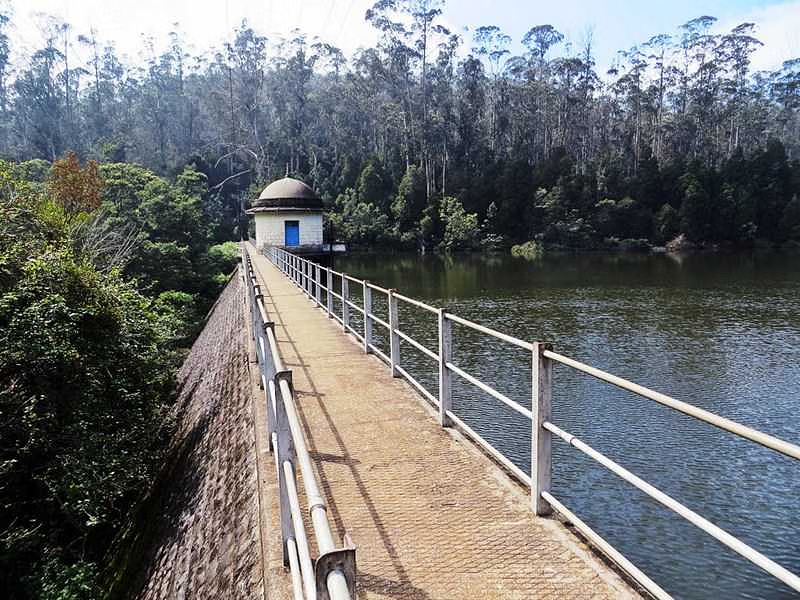The magnificent Arunachalam Temple in Tiruvannamalai stands as one of South India’s most revered spiritual destinations, attracting millions of devotees seeking divine blessings and transformation. Understanding the best time to visit Arunachalam can dramatically enhance your pilgrimage experience, whether for temple darshan, sacred rituals, or the transformative Giri Pradakshina. This comprehensive guide covers optimal visiting seasons, essential arunachalam abhishekam timings, auspicious arunachalam giri pradakshina dates, and practical guidance on how to do giri pradakshina in arunachalam for a meaningful spiritual journey.
Table of Contents
Historical Significance of Arunachalam

The sacred Arunachalam holds profound significance in Hindu spiritual traditions. According to ancient scriptures, Lord Shiva manifested here as an infinite pillar of divine light to resolve a cosmic dispute between Lord Brahma and Lord Vishnu. When neither deity could find the beginning or end of this celestial flame, Lord Shiva revealed his true form and declared Arunachala Hill as his eternal sacred abode.
The magnificent Annamalaiyar Temple, dedicated to Lord Arunachaleswarar, represents one of the five Pancha Bhoota Sthalams, symbolizing the fire element (Agni). Sprawling across 25 acres, this architectural marvel features towering gopurams with the eastern tower reaching 217 feet. The site gained additional spiritual prominence through Sri Ramana Maharshi, who spent decades in meditation at Arunachala’s foothills.
Best Time to Visit Arunachalam by Season
Understanding seasonal variations proves crucial for planning your spiritual journey to this sacred destination. Each period offers distinct advantages and challenges for pilgrims seeking to connect with Arunachalam’s divine energy. Let’s explore the best time to visit Arunachalam according to comprehensive seasonal analysis.
Winter Season (December to February): Optimal Pilgrimage Period
Winter represents the absolute best time to visit Arunachalam, offering ideal conditions for all spiritual activities:
Temperature Range: 15-28°C (59-82°F) Weather Conditions: Cool mornings and evenings with pleasant, comfortable afternoons
Spiritual Significance: Coincides with Karthigai Deepam festival and multiple auspicious occasions
Giri Pradakshina Experience: Excellent conditions for the 14-kilometer sacred walk
Crowd Levels: High, especially during festivals and full moon celebrations
Post-Monsoon Season (October to November): Refreshing Transition
The post-monsoon period offers rejuvenated landscapes and increasingly comfortable weather:
Temperature Range: 20-30°C (68-86°F)
Weather Conditions: Gradually cooling temperatures with occasional refreshing showers
Spiritual Significance: Builds anticipation toward Karthigai Deepam, the year’s most significant festival
Giri Pradakshina Experience: Excellent, with lush green surroundings following monsoon renewal
Crowd Levels: Moderate, steadily increasing toward major festival celebrations
Spring Season (March to April): Final Comfortable Window
Early spring provides the last opportunity for comfortable weather before summer intensity:
Temperature Range: 25-35°C (77-95°F)
Weather Conditions: Increasingly warm but still manageable for extended temple visits
Spiritual Significance: Panguni Uthiram festival with elaborate ceremonial processions
Giri Pradakshina Experience: Moderately comfortable when undertaken during early morning hours
Crowd Levels: Moderate, with regular pilgrimage activities
Summer Season (May to June): Challenging Conditions
Summer brings demanding conditions requiring careful planning and preparation:
Temperature Range: 30-40°C (86-104°F) or higher
Weather Conditions: Intense heat with extremely dry atmospheric conditions
Spiritual Significance: Regular temple activities continue with dedicated devotee participation
Giri Pradakshina Experience: Challenging and potentially hazardous due to extreme heat
Crowd Levels: Lowest annual numbers, primarily serious spiritual practitioners
Monsoon Season (July to September): Mystical Atmosphere
The monsoon period creates unique spiritual ambiance despite practical challenges:
Temperature Range: 25-35°C (77-95°F)
Weather Conditions: Intermittent rainfall creating high humidity levels
Spiritual Significance: Regular temple activities with fewer large-scale events
Giri Pradakshina Experience: Difficult due to wet conditions and occasional flooding
Crowd Levels: Annual minimum, offering intimate spiritual experiences
Seasonal Comparison for Arunachalam Visits
| Season | Months | Temperature (°C) | Weather | Key Festivals |
| Winter | Dec-Feb | 15-28 | Pleasant, cool | Karthigai Deepam, Thai Poosam, Shivaratri |
| Post-Monsoon | Oct-Nov | 20-30 | Pleasant with showers | Karthigai Deepam preparation |
| Spring | Mar-Apr | 25-35 | Warm but manageable | Panguni Uthiram |
| Summer | May-Jun | 30-40+ | Very hot and dry | Regular temple activities |
| Monsoon | Jul-Sep | 25-35 | Rainy and humid | Regular temple activities |
Arunachalam Abhishekam Timings

The sacred abhishekam ceremonies represent central worship practices at Annamalaiyar Temple, offering devotees opportunities to witness powerful divine rituals. Understanding arunachalam abhishekam timings enables proper planning for these transformative spiritual experiences.
Daily Abhishekam Schedule
The temple performs multiple abhishekams throughout each day according to traditional timings:
Ushakala Abhishekam (Dawn): 6:00 AM – 7:00 AM Kalasandhi Abhishekam (Morning): 8:00 AM – 9:00 AM
Uchikala Abhishekam (Noon): 12:00 PM – 1:00 PM Sayarakshai Abhishekam (Evening): 5:00 PM – 6:00 PM
Ardha Jama Abhishekam (Night): 8:00 PM – 9:00 PM
Special Abhishekam Occasions
During festivals and auspicious periods, additional abhishekams enhance spiritual energy:
Karthigai Deepam: Multiple special abhishekams throughout the 10-day festival celebration
Full Moon Days: Enhanced abhishekams with elaborate special offerings
Pradosha Days: Special evening abhishekams on the 13th day of lunar fortnight
Maha Shivaratri: Continuous abhishekams throughout the sacred night
Monday Abhishekams: Particularly auspicious as Lord Shiva’s dedicated day
The arunachalam temple abhishekam timings may experience slight variations during special occasions, making it advisable to confirm current schedules with temple authorities.
Arunachalam Temple Dress Code
Observing proper dress code demonstrates respect for this sacred space while enhancing your spiritual experience. The arunachalam temple dress code reflects traditional values and spiritual significance.
Dress Code for Men
Traditional Attire: Dhoti (veshti) and angavastram (upper cloth) represents most appropriate clothing
Acceptable Alternatives: Formal pants with shirts or kurta-pajama combinations
Prohibited Items: Shorts, sleeveless shirts, and any revealing clothing
Footwear: Must be completely removed before entering temple premises
Additional Guidelines: Leather items may require storage outside certain temple areas
Dress Code for Women
Traditional Attire: Saree or salwar kameez highly recommended for temple visits
Acceptable Alternatives: Long skirts with appropriate tops covering shoulders completely
Prohibited Items: Shorts, sleeveless tops, short skirts, and revealing clothing
Footwear: Must be removed before entering temple premises
Additional Guidelines: Head covering optional but respectful, especially during special ceremonies
General Dress Guidelines
- Modest clothing covering shoulders, chest, and knees required for all visitors
- Clean, fresh attire expected as demonstration of respect
- Devotees participating in special pujas may require traditional attire
- Comfortable yet modest clothing recommended for Giri Pradakshina
- Photography restrictions apply in certain temple areas
Arunachalam Giri Pradakshina Dates

Giri Pradakshina, the sacred practice of circumambulating Arunachala Hill, holds special significance on specific dates according to Hindu lunar calendar calculations. Understanding arunachalam giri pradakshina dates helps devotees align their visit with most auspicious occasions.
Most Auspicious Dates for Giri Pradakshina
Pournami (Full Moon Days): Considered most meritorious time for circumambulation
Karthigai Deepam Full Moon: Annual calendar’s most significant pradakshina occasion
Shivaratri: Highly auspicious for hill circumambulation
Pradosha Days: 13th day of lunar fortnight dedicated to Lord Shiva
Monthly Krittika Star: Arunachala Shiva’s birth star constellation
Upcoming Full Moon Dates 2025-2026
For pilgrims planning their sacred journey, here are upcoming full moon dates when Giri Pradakshina carries special spiritual significance:
- May 14, 2025
- June 13, 2025
- July 12, 2025
- August 10, 2025
- September 9, 2025
- October 8, 2025 (Near Karthigai Deepam)
- November 7, 2025 (Karthigai Deepam)
- December 6, 2025
- January 5, 2026
- February 3, 2026
While full moon days attract largest crowds, many devotees prefer regular days for more tranquil, personally meaningful pradakshina experiences.
How to Do Giri Pradakshina in Arunachalam
Understanding how to do giri pradakshina in arunachalam properly enhances both spiritual benefits and physical safety during this sacred 14-kilometer journey. Following traditional guidelines ensures respectful participation in this ancient practice.
Traditional Pradakshina Procedure
Starting Point: Begin at Annamalaiyar Temple’s eastern gate after completing darshan
Direction: Walk clockwise around Arunachala Hill (keeping hill to your right)
Spiritual Practice: Maintain silence or chant “Om Namah Shivaya” or “Arunachala Shiva”
Walking Pace: Steady, meditative pace focusing on spiritual contemplation
Ritual Observance: Traditionally avoid eating during pradakshina (health exceptions permitted)
Sacred Stops: Visit significant temples and lingams along route for brief prayers
Completion: Return to starting point and conclude with final temple darshan
Arunachalam Giri Pradakshina Route Details
The complete arunachalam giri pradakshina route encompasses several sacred landmarks:
Distance: 14 kilometers total circumambulation
Duration: 3-4 hours for most devotees at moderate pace
Path Type: Mostly paved roads with some stone path sections
Sacred Stops: Eight lingams (Ashta Lingam), Adi Annamalai Temple, Pachaiamman Temple
Rest Points: Multiple designated areas for brief rest and refreshment
Three Pradakshina Path Options
Outer Path (14 km): Standard route suitable for all devotees
Inner Path (10 km): For regular practitioners seeking shorter distance
Forest Path (8 km): Challenging route for experienced spiritual seekers
Special Pradakshina Considerations
Night Pradakshina: Many devotees prefer moonlit circumambulation, especially during full moon
Group vs. Individual: While group pradakshinas are popular, solitary walks offer deeper introspection
Preparation: Ensure physical fitness, carry water, wear comfortable walking shoes
Safety: Inform someone of your plans, especially for night or early morning pradakshina
Transportation and Connectivity
Tiruvannamalai enjoys excellent connectivity to major South Indian cities, making Arunachalam accessible for pilgrims nationwide and internationally.
From Chennai (195 km – 4 hours)
By Road: Via NH66, regular bus services and taxi options
By Train: Daily train services to Tiruvannamalai Railway Station
By Bus: Government and private buses from Chennai Koyambedu Bus Stand
From Bangalore (250 km – 5 hours)
By Road: Via NH77, regular KSRTC and private bus services
By Train: Connect through Katpadi Junction, then proceed by bus
By Bus: Direct services from Bangalore to Tiruvannamalai
From Mumbai and Other Cities
Long-distance travelers can consider comprehensive pilgrimage packages that include Arunachalam along with other sacred South Indian temples. Professional tour operators offer customized itineraries covering multiple spiritual destinations.
Accommodation Options Near Arunachalam
Tiruvannamalai offers diverse accommodation options catering to different budgets and spiritual preferences.
Spiritual Accommodations
Ramanasramam: Peaceful ashram atmosphere with basic amenities
Seshadri Ashram: Traditional accommodation for serious spiritual seekers
Yogi Ram Surat Kumar Ashram: Welcoming environment for meditation practitioners
Temple Dharamshalas: Simple, affordable lodging for pilgrims
Hotels and Guesthouses
Sparsa Resort: Comfortable modern amenities with spiritual ambiance
Arunachala Hotel: Well-appointed rooms with restaurant facilities
Hotel Trishul International: Higher-end option with comprehensive services
Budget Options: Multiple affordable guest houses near temple vicinity
Booking Considerations
- Reserve well in advance for Karthigai Deepam and full moon periods
- Temple-proximity accommodations fill quickly during peak seasons
- Many ashrams require advance applications for extended stays
- Consider spiritual practice requirements when selecting accommodation
Essential Travel Tips for Arunachalam
General Guidelines
- Respect local customs and spiritual traditions throughout your visit
- Photography restrictions apply in certain temple areas
- Carry minimal valuables during temple visits and pradakshina
- Maintain hydration, especially during extended spiritual activities
- Consider local guides for deeper spiritual insights
Health and Safety
- Carry necessary medications, particularly for pradakshina
- Use sun protection during day visits, especially in summer
- Maintain vigilance with belongings during crowded full moon nights
- Drink only bottled or filtered water
- Emergency medical facilities available in Tiruvannamalai
Extended Pilgrimage Opportunities
Consider combining your Arunachalam visit with other sacred destinations through comprehensive tour packages. Whether you’re interested in Mahabaleshwar tour packages from Mumbai for mountain spirituality, Goa tour packages from Mumbai for coastal devotion, extensive India tour packages from Mumbai covering multiple pilgrimage sites, or the challenging Kedarnath tour packages from Mumbai for Himalayan spirituality, professional travel arrangements can create comprehensive spiritual journeys.
Conclusion: The Perfect Time for Your Arunachalam Pilgrimage
The best time to visit Arunachalam ultimately depends on your spiritual priorities, physical comfort preferences, and desired level of crowd interaction. Winter months from December to February offer the most favorable combination of pleasant weather, significant festivals, and optimal conditions for Giri Pradakshina. The sacred Karthigai Deepam festival represents the year’s most spiritually auspicious period, while monthly full moon days provide regular opportunities for particularly meaningful pradakshina experiences.
For devotees seeking profound spiritual transformation, Arunachalam’s divine energy transcends seasonal considerations. The sacred presence of Lord Arunachaleswarar and the powerful spiritual atmosphere of Arunachala Hill create opportunities for deep spiritual connection regardless of visiting season. However, understanding optimal timing, proper arunachalam abhishekam timings, knowing auspicious arunachalam giri pradakshina dates, and learning how to do giri pradakshina in arunachalam correctly can significantly enhance your pilgrimage experience.
Whether you come for brief temple darshan or extended spiritual retreat, Arunachalam offers transformative experiences that resonate long after your visit. The key lies in approaching this sacred space with genuine devotion, proper preparation, and openness to receive Lord Arunachaleswarar’s abundant blessings.
You can visit us at VDP Travels, Neighbourhood Complex, F- 5, near SBI Bank, Sector 4, Nerul, Navi Mumbai, Mumbai, Maharashtra 400706. For comprehensive pilgrimage experiences and customized spiritual journey itineraries, call +91 99675 18405, or visit https://vdp-travels.com.
Best Time to Visit Arunachalam: FAQs
What is the best time to visit Arunachalam for comfortable weather conditions?
Winter months (December-February) offer the best conditions with temperatures 15-28°C, perfect for temple visits and Giri Pradakshina. Post-monsoon period (October-November) is also excellent with comfortable weather and lush surroundings.
When are the most auspicious arunachalam giri pradakshina dates?
Pournami (full moon days) are most auspicious, with Karthigai Deepam full moon being the most significant. Other highly auspicious times include Shivaratri, Pradosha days, and monthly Krittika star days.
What are the daily arunachalam abhishekam timings?
Daily abhishekams are at 6:00-7:00 AM, 8:00-9:00 AM, 12:00-1:00 PM, 5:00-6:00 PM, and 8:00-9:00 PM. Special abhishekams occur during festivals and auspicious days.
How do I properly perform Giri Pradakshina in Arunachalam?
Begin at the eastern gate after temple darshan, walk clockwise around the 14-kilometer path while chanting mantras. Visit sacred stops along the route and conclude with final temple darshan, taking 3-4 hours total.
What is the arunachalam temple dress code for visitors?
Men should wear dhoti and angavastram or formal pants with shirts. Women should wear saree or salwar kameez with modest covering, avoiding shorts and sleeveless clothing.
Can I visit Arunachalam during summer months?
Yes, but summer visits require careful planning due to temperatures exceeding 40°C. Early morning (4:00-8:00 AM) and evening (after 6:00 PM) are the only comfortable times.
What are the arunachalam temple abhishekam timings during festivals?
Festivals like Karthigai Deepam feature multiple special abhishekams throughout the celebration period. Full moon days have enhanced abhishekams, while Maha Shivaratri includes continuous night-long ceremonies.
Is advance booking required for Arunachalam accommodation?
Yes, especially during Karthigai Deepam festival and full moon periods when demand peaks significantly. Temple-proximity accommodations fill quickly, so book well in advance.
What is the complete arunachalam giri pradakshina route?
The 14-kilometer route circles Arunachala Hill clockwise, passing through Adi Annamalai Temple, eight sacred lingams, and Pachaiamman Temple. The path is mostly paved with stone sections and designated rest points.
How should I prepare for Giri Pradakshina at Arunachalam?
A: Ensure physical fitness for the 14-kilometer walk, carry water and first aid supplies, wear comfortable walking shoes. Maintain spiritual focus through mantras and inform someone of your pradakshina plans.





